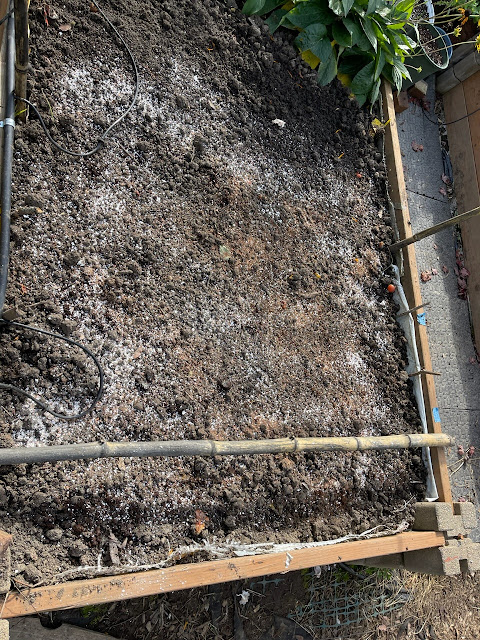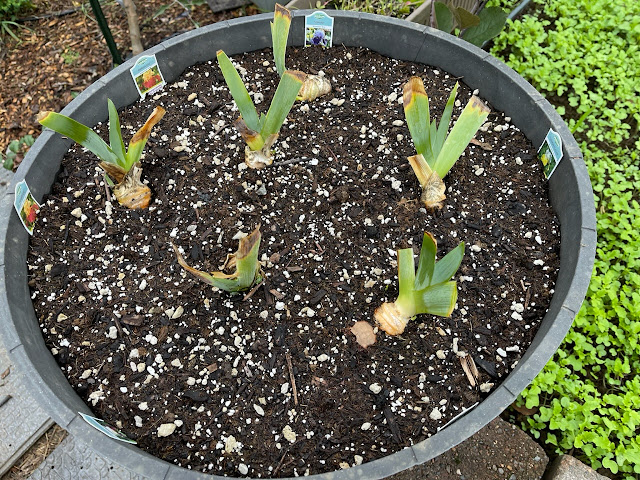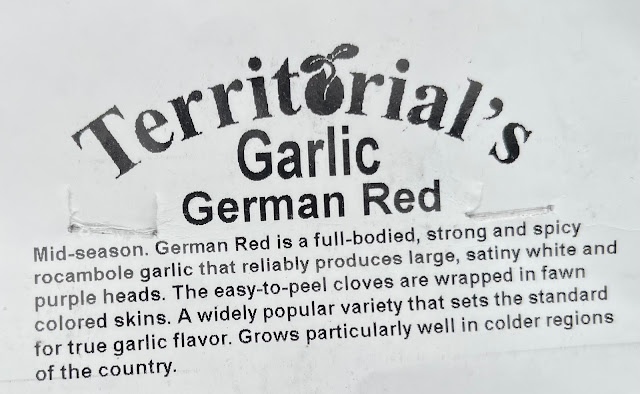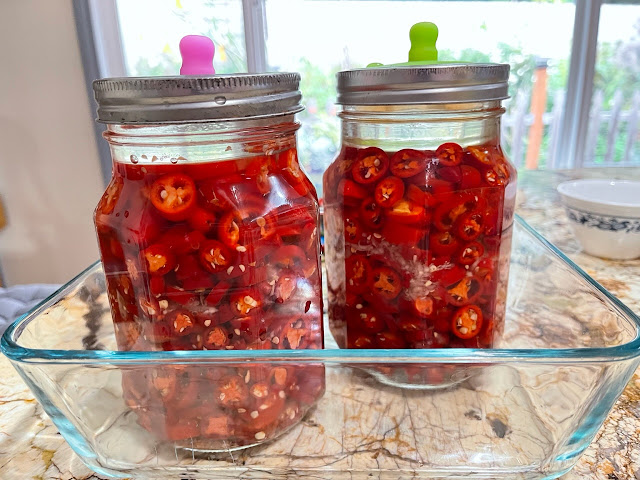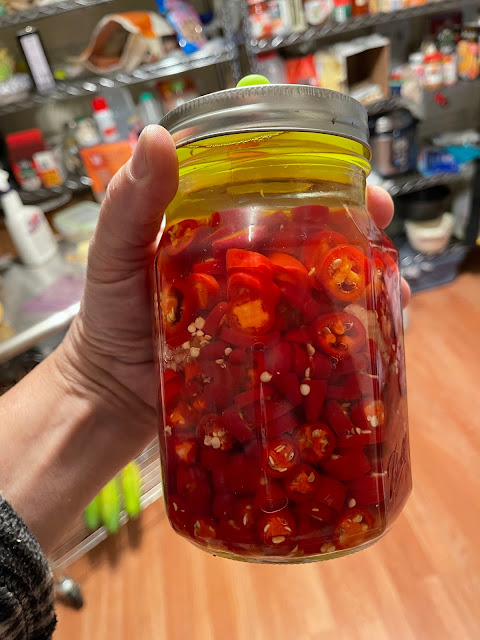About every ten days, I make a big batch of dog food with chicken thighs as the main meat ingredient (for the taurine). I portion it out into 7 oz portions, refrigerate a three day supply, and freeze the portions to because later. As a vegetarian, I don't have bones from my own meals.
The chicken thighs are slow cooked overnight, and the bones just fall off. I dry the bones. In the past, I threw them into the woodstove, to supply minerals in the ash, which I scattered onto the garden beds. We decommissioned the woodstove (breathing is a good thing), so now what to do with the chicken thigh (femur) bones?
After drying thoroughly, I pounded and ground them using a granite mortar and pestle. The came out like this.
They are a bit crunchy and a bit fluffy. Not that different from purchased bone meal, except less dense.
I also grind eggshells the same way.
Bonemeal is mainly a phosphorous source, especially good for bulbs, roots, flowers. From wikipedia, the NPK is about 3:15:0 and calcium content is about 12%. (a sobering, sad, macabre comment in Wikipedia, "In desperation, farmers collected the bones from major battlefields like the Battle of Waterloo and the Battle of Austerlitz to crush them and refertilize the soil.")
From The Spruce, bone meal promotes flowering, fruit, and seed production, and is slow release over about four months. I imagine that is slower in winter months, and is retained in the soil for later. There is also some magnesium and zinc. Acidic soil (which mine is) is needed to break down the bone meal.
Eggshells are mainly a calcium source. They are 95% to 97% Calcium Carbonate (Wikipedia). My soil tests low for calcium, due to Pacific NW rains and other factors. Eggshell is also a soil conditioner.
Here I added both additives to the recently planted German garlic bed.
It would be better to add before planting the garlic, but I didn't think of it. I used about a cup of each. Then used a small stirrup hoe to work it into the top inch of soil, well above the planted garlic cloves.

















